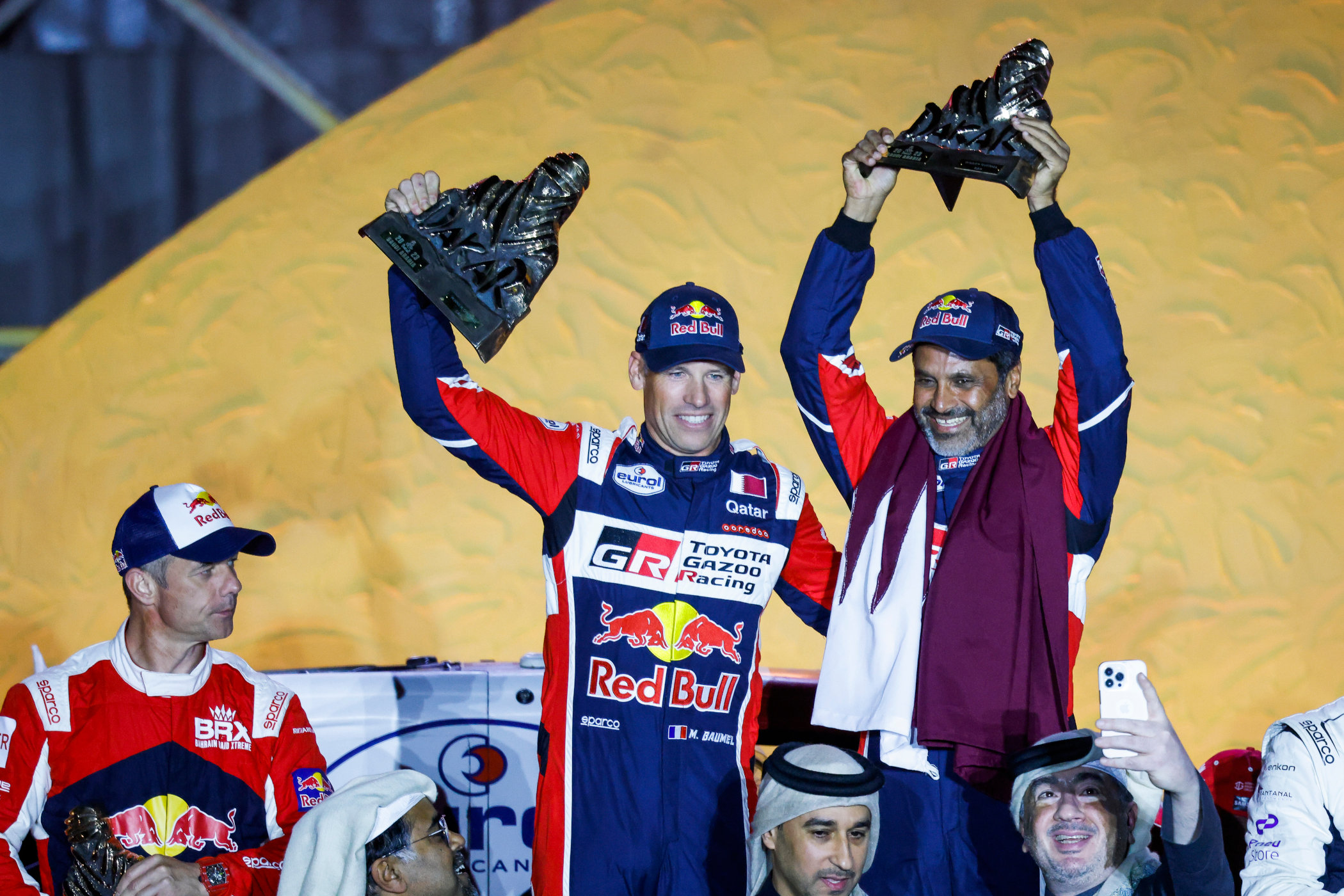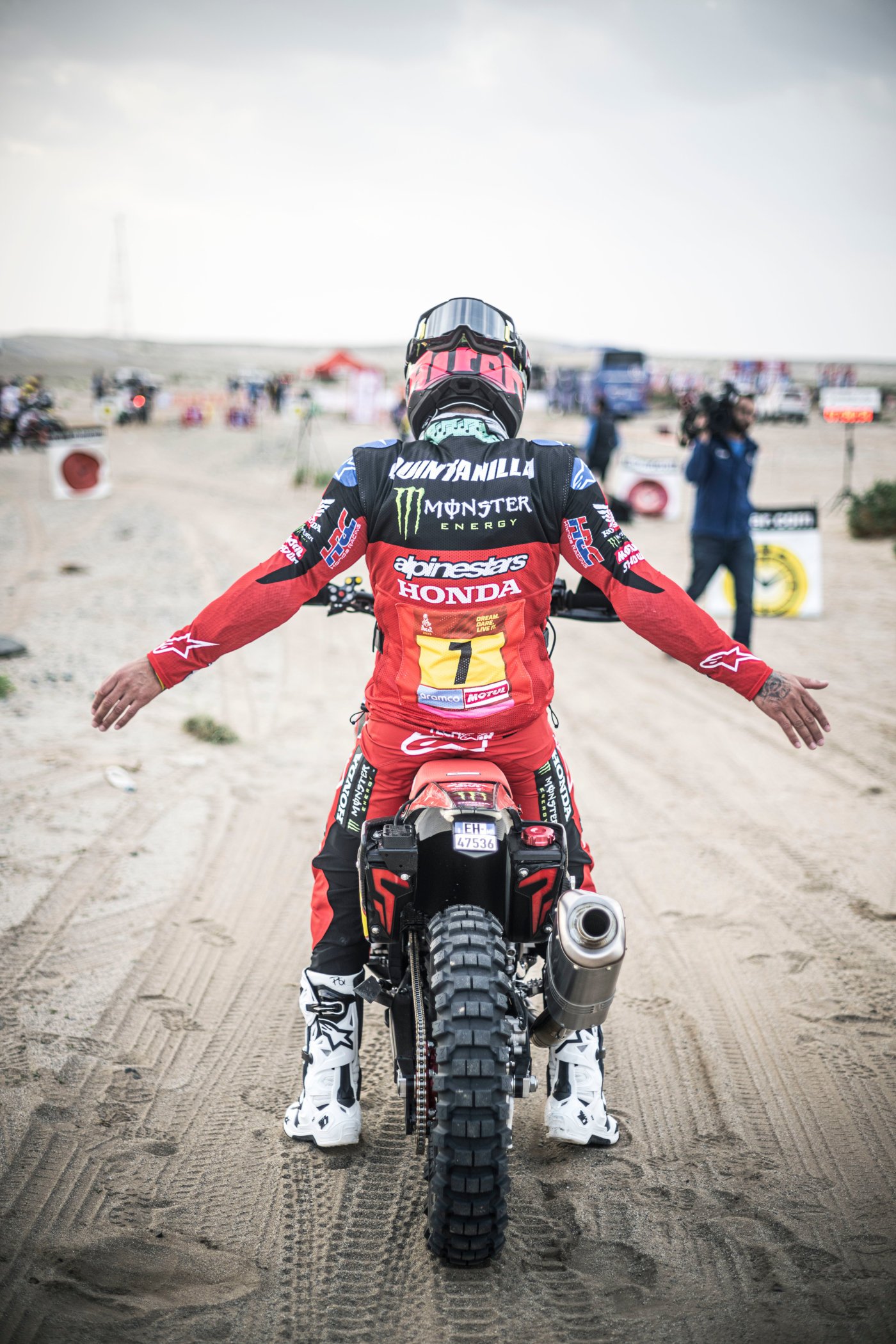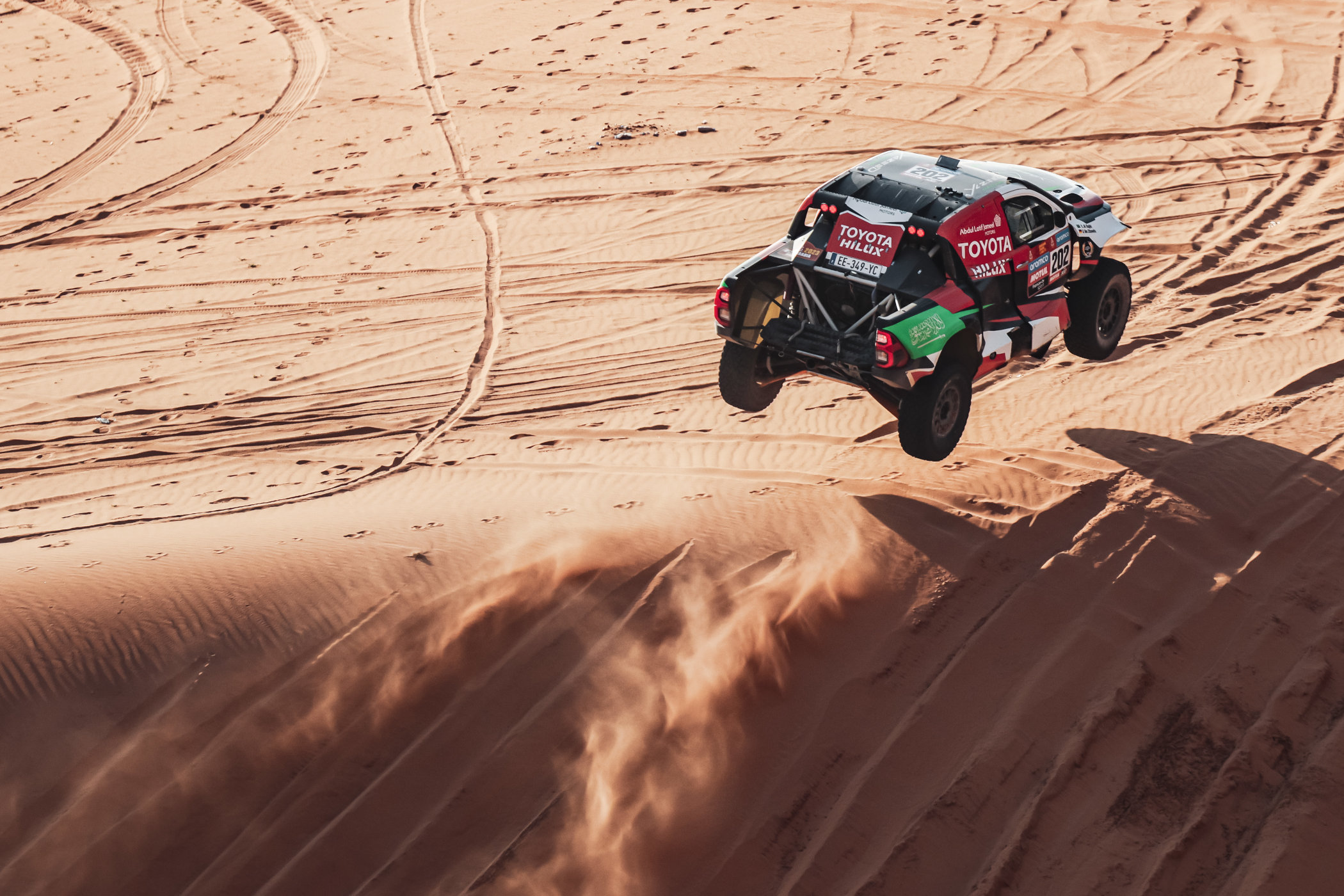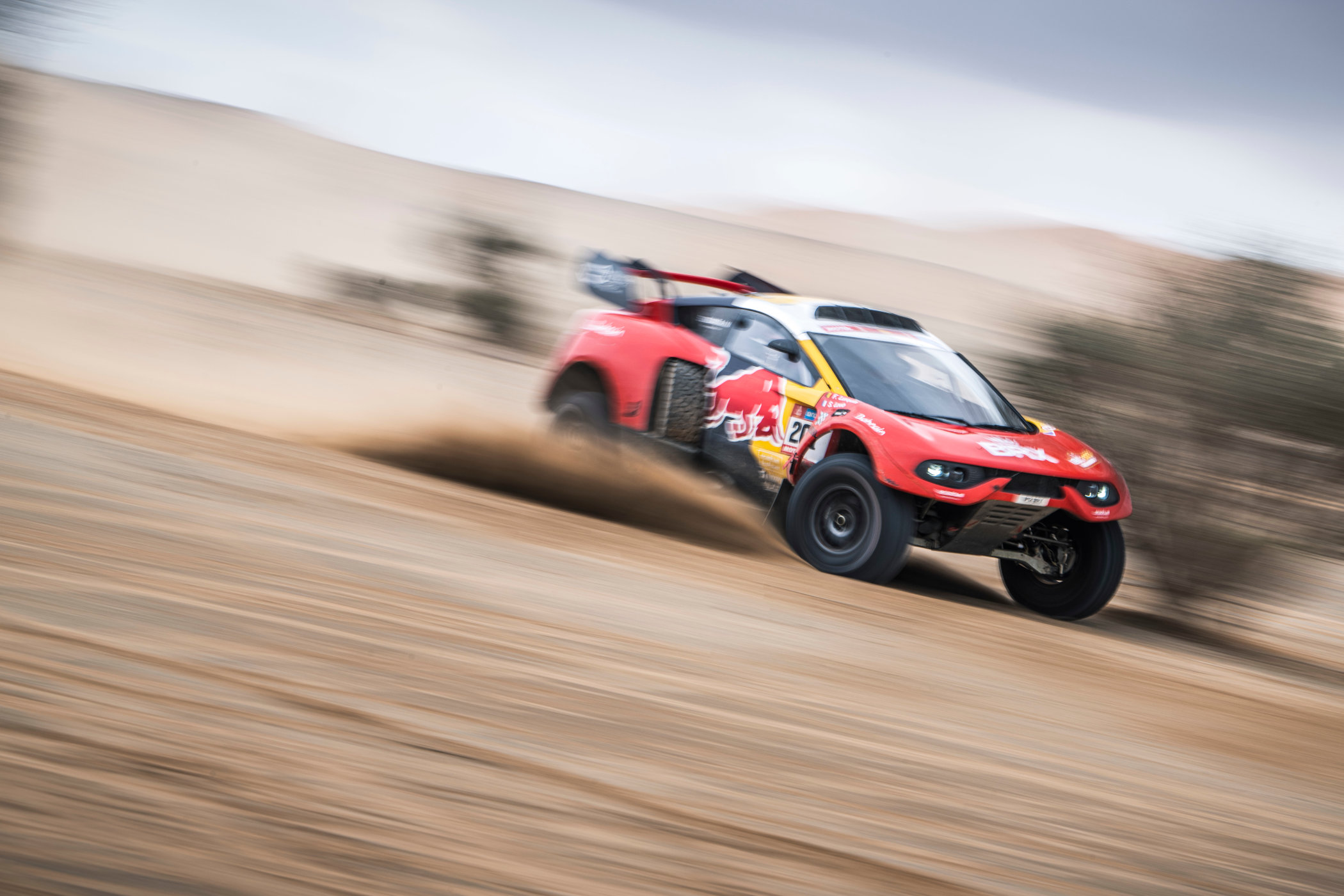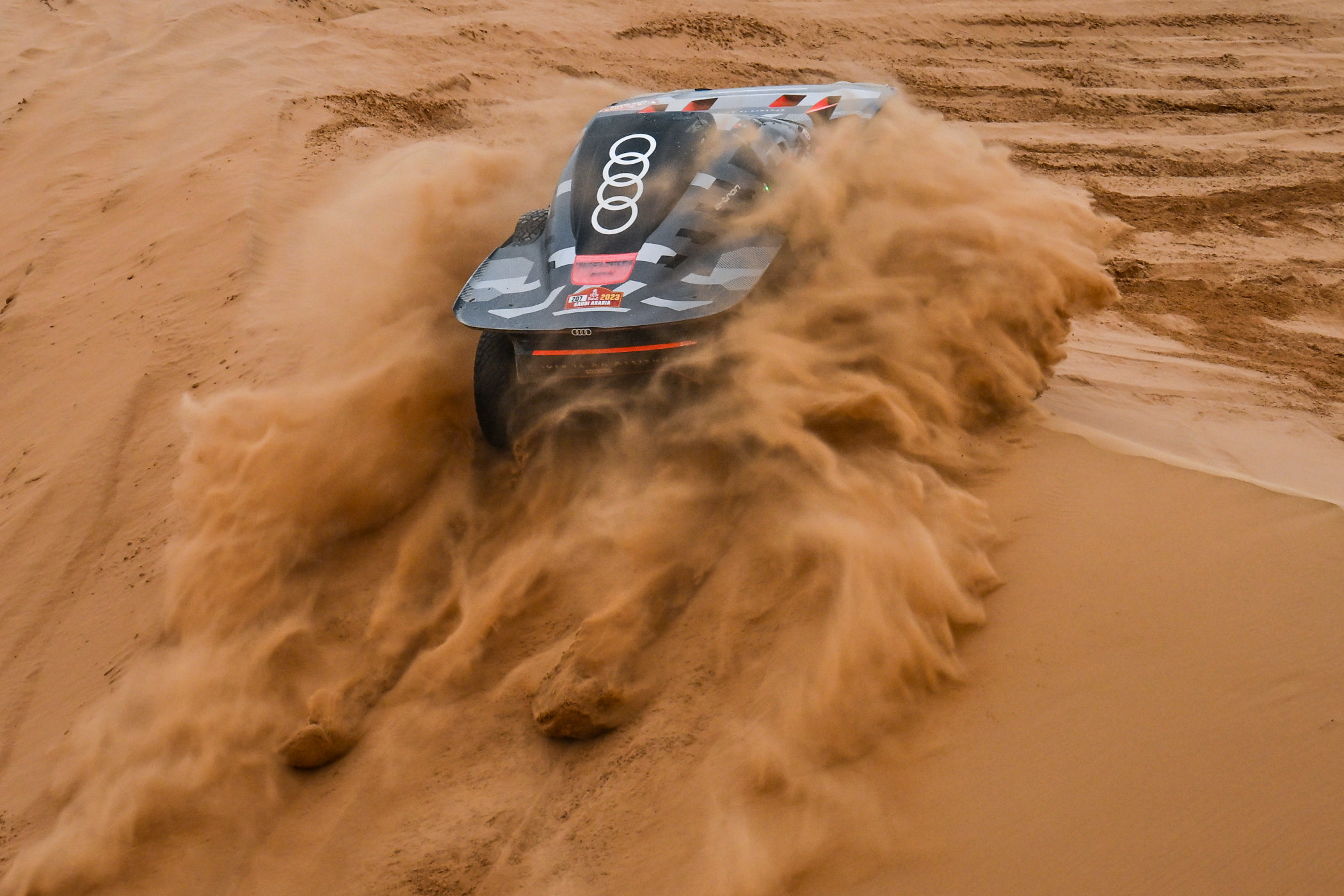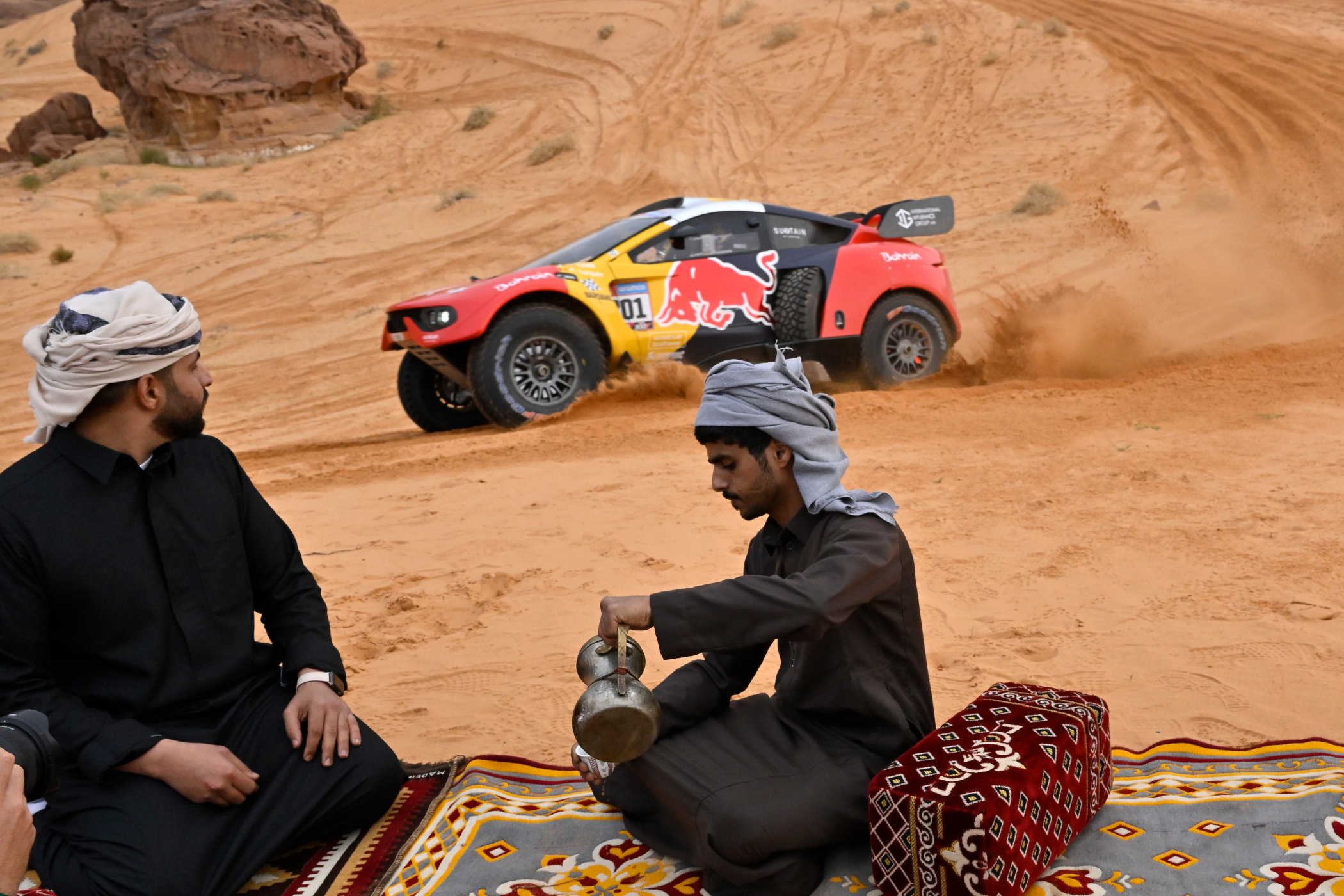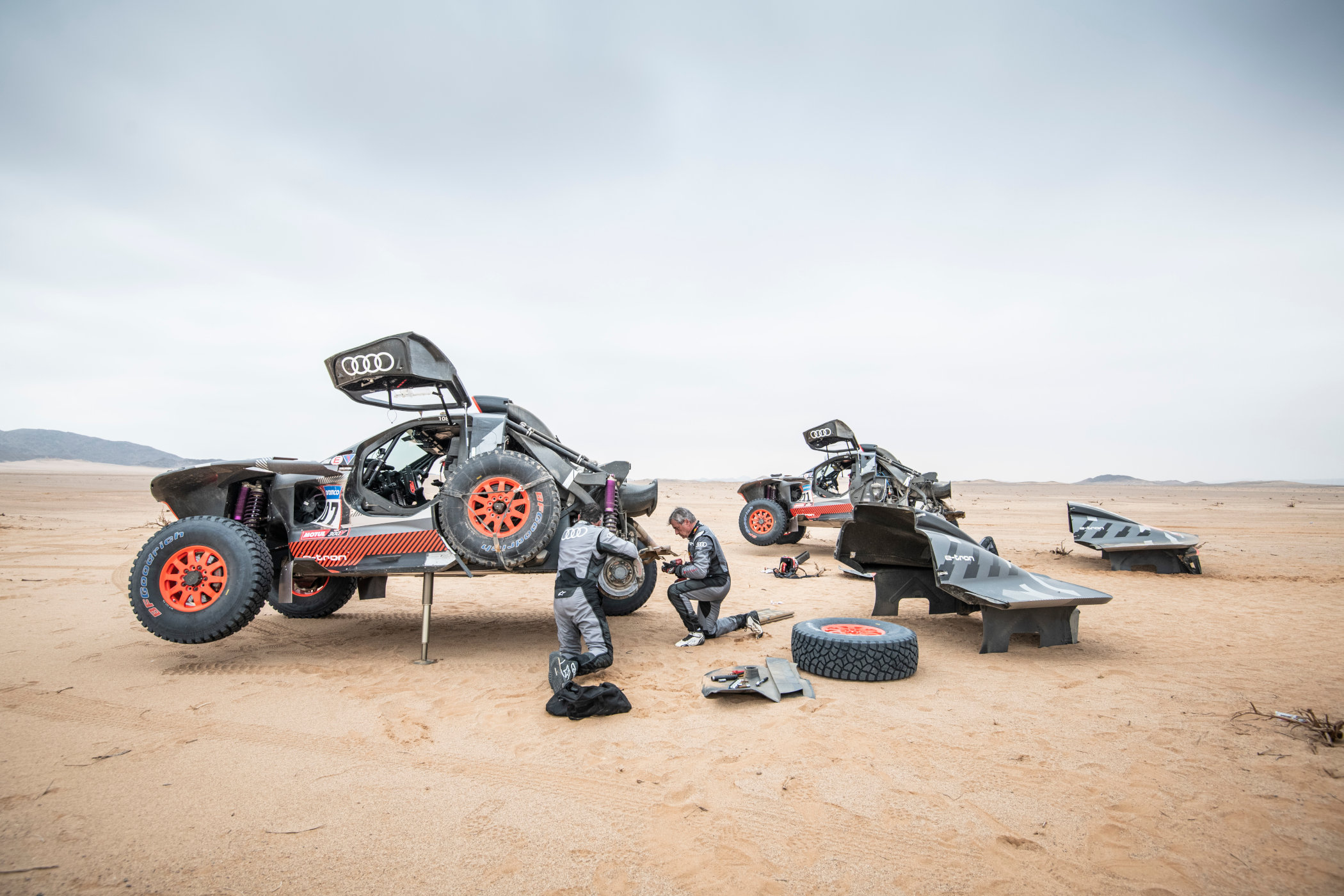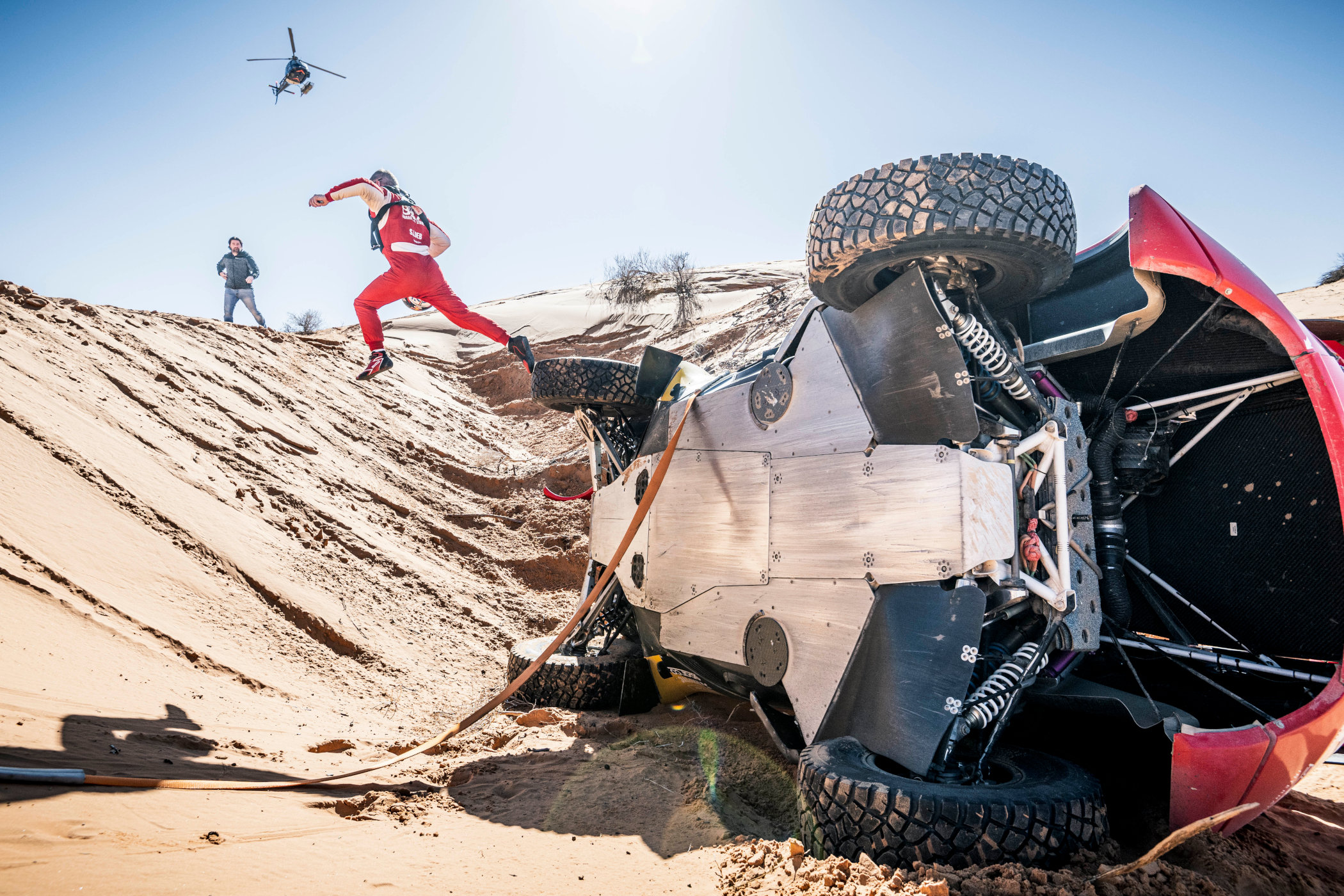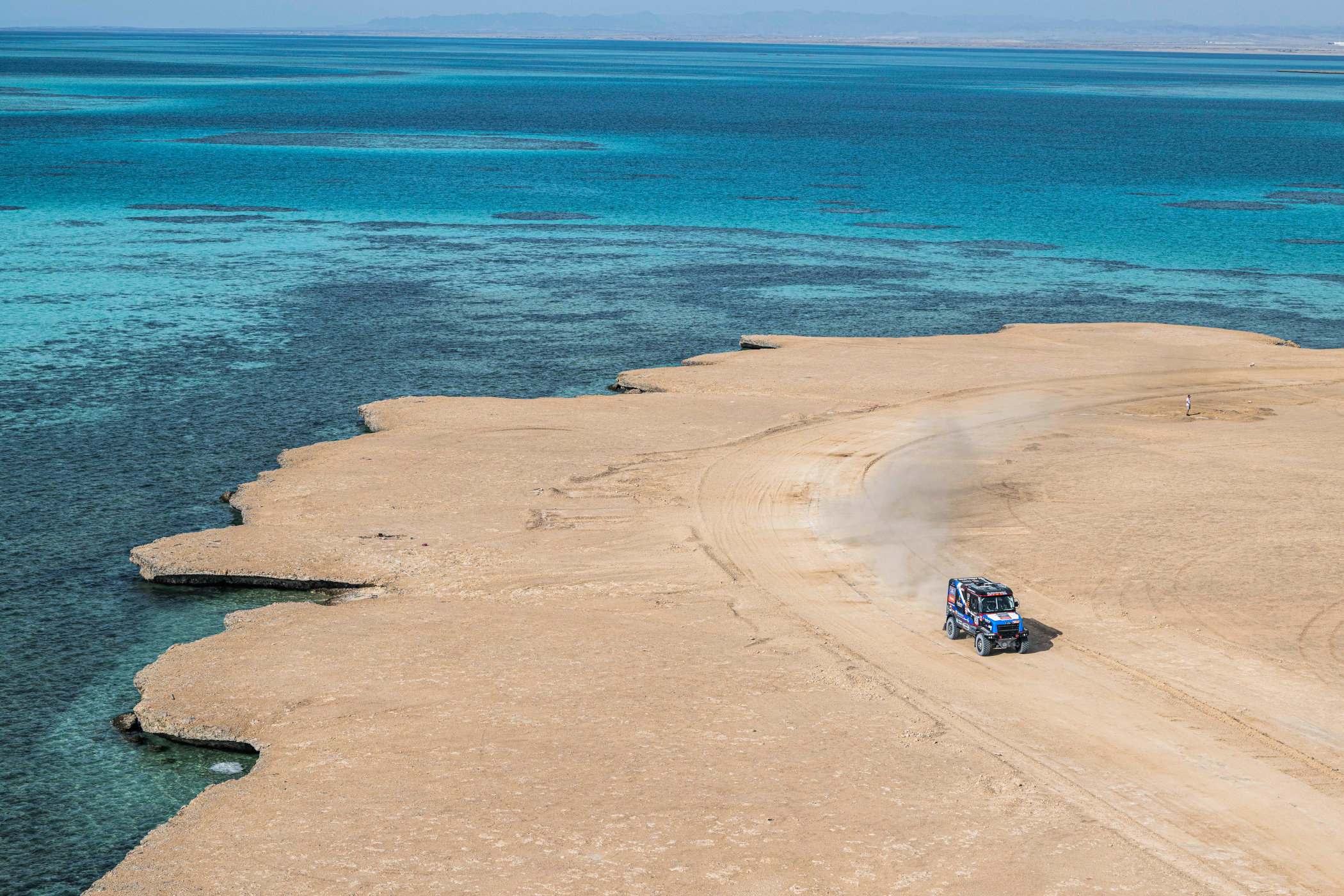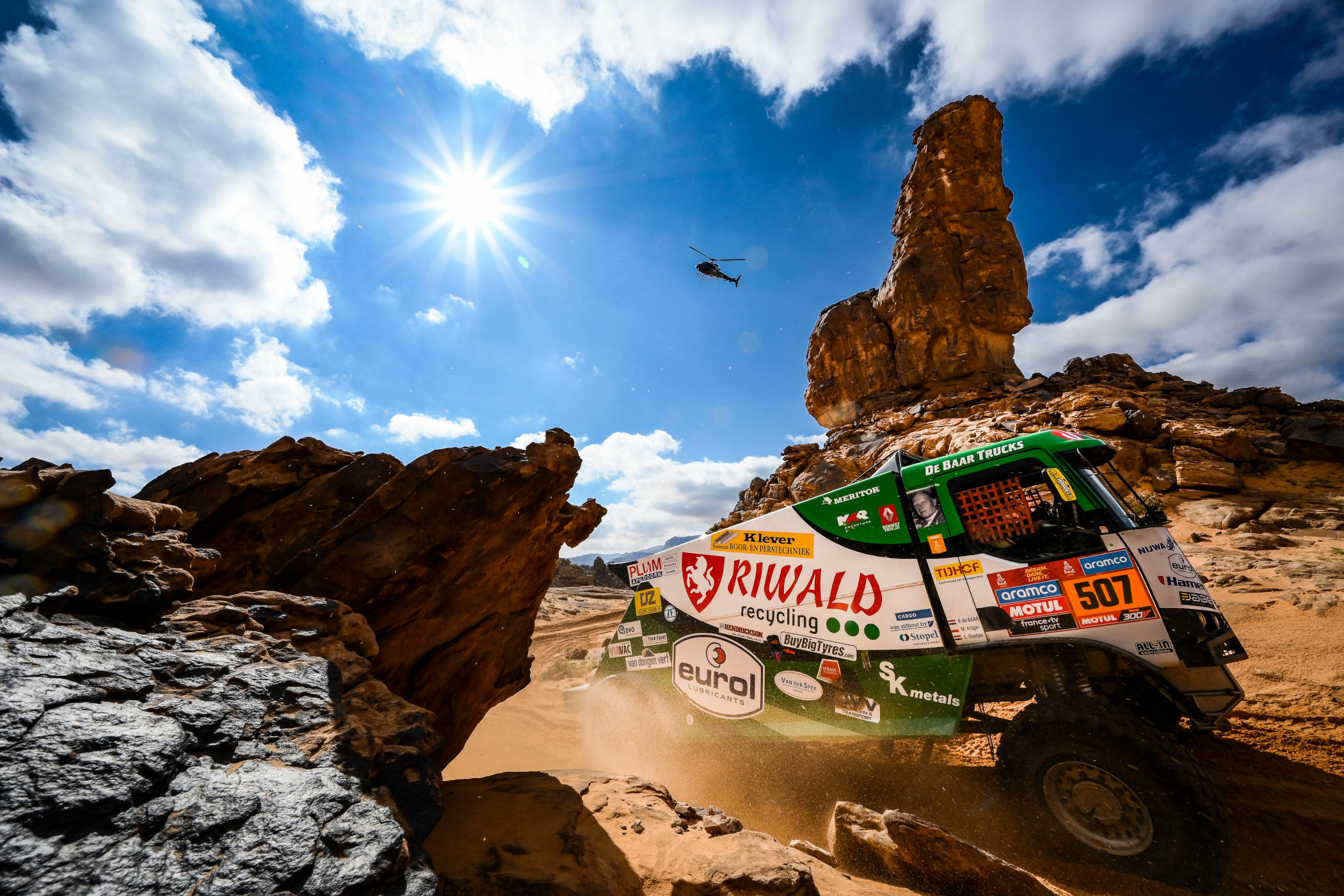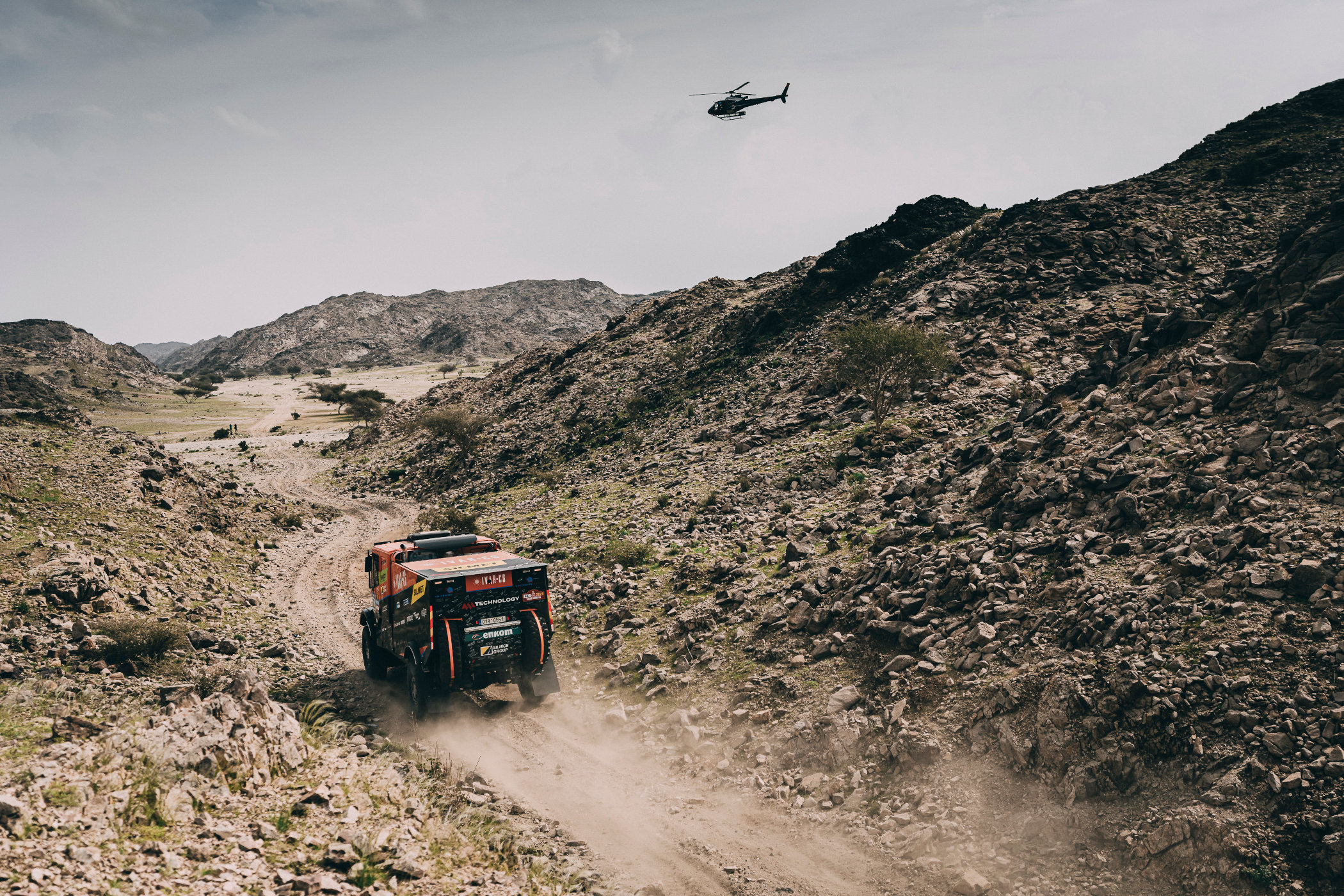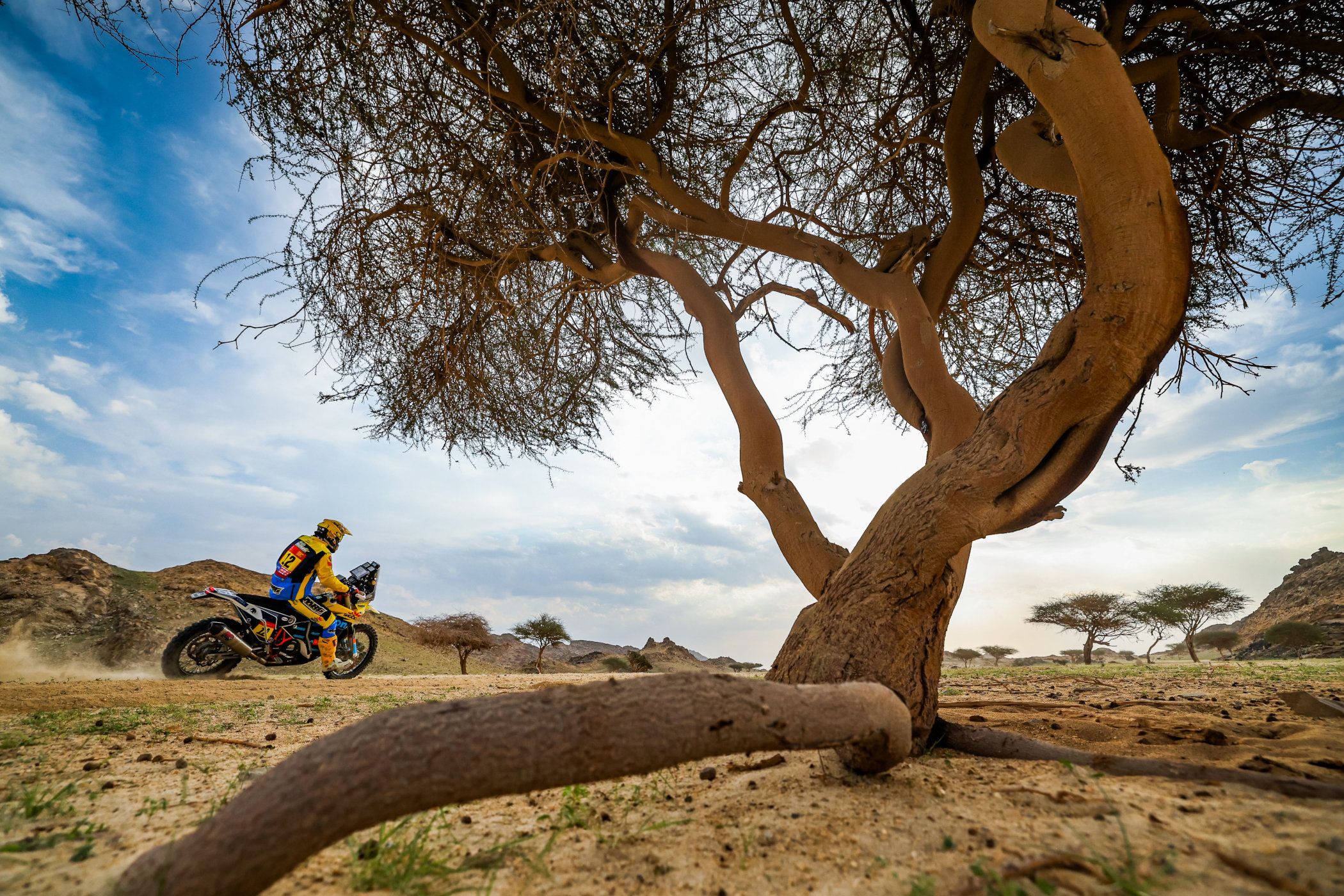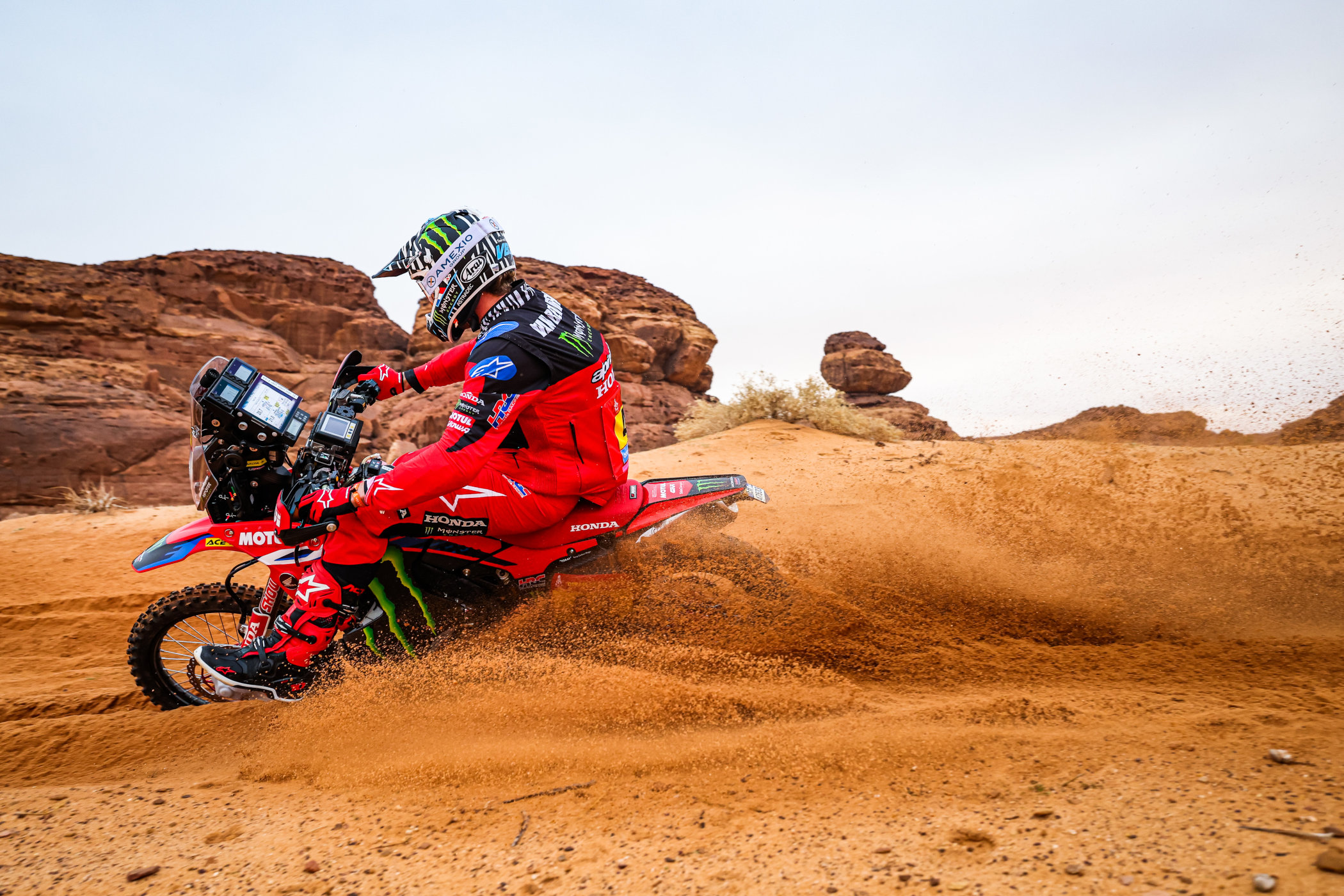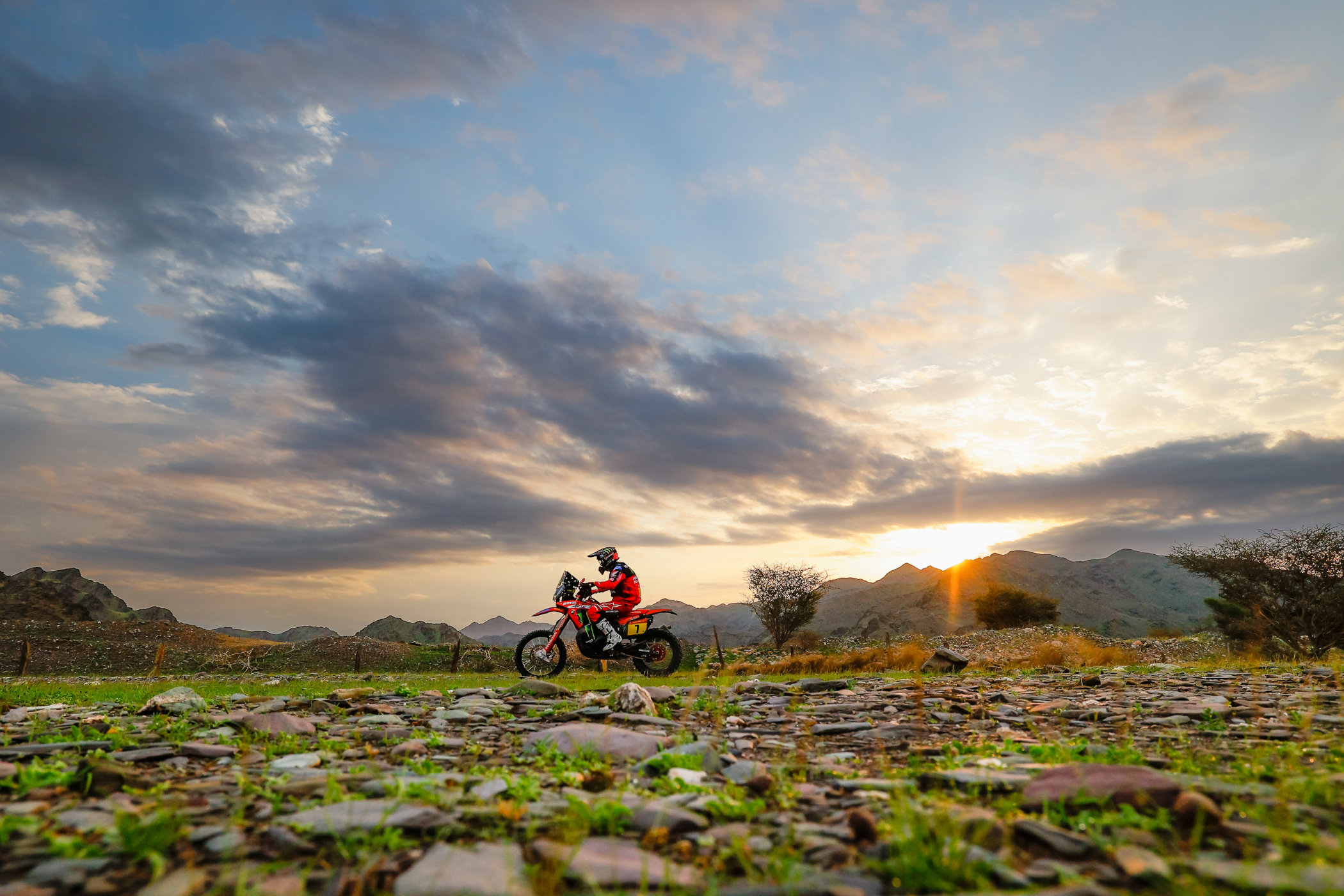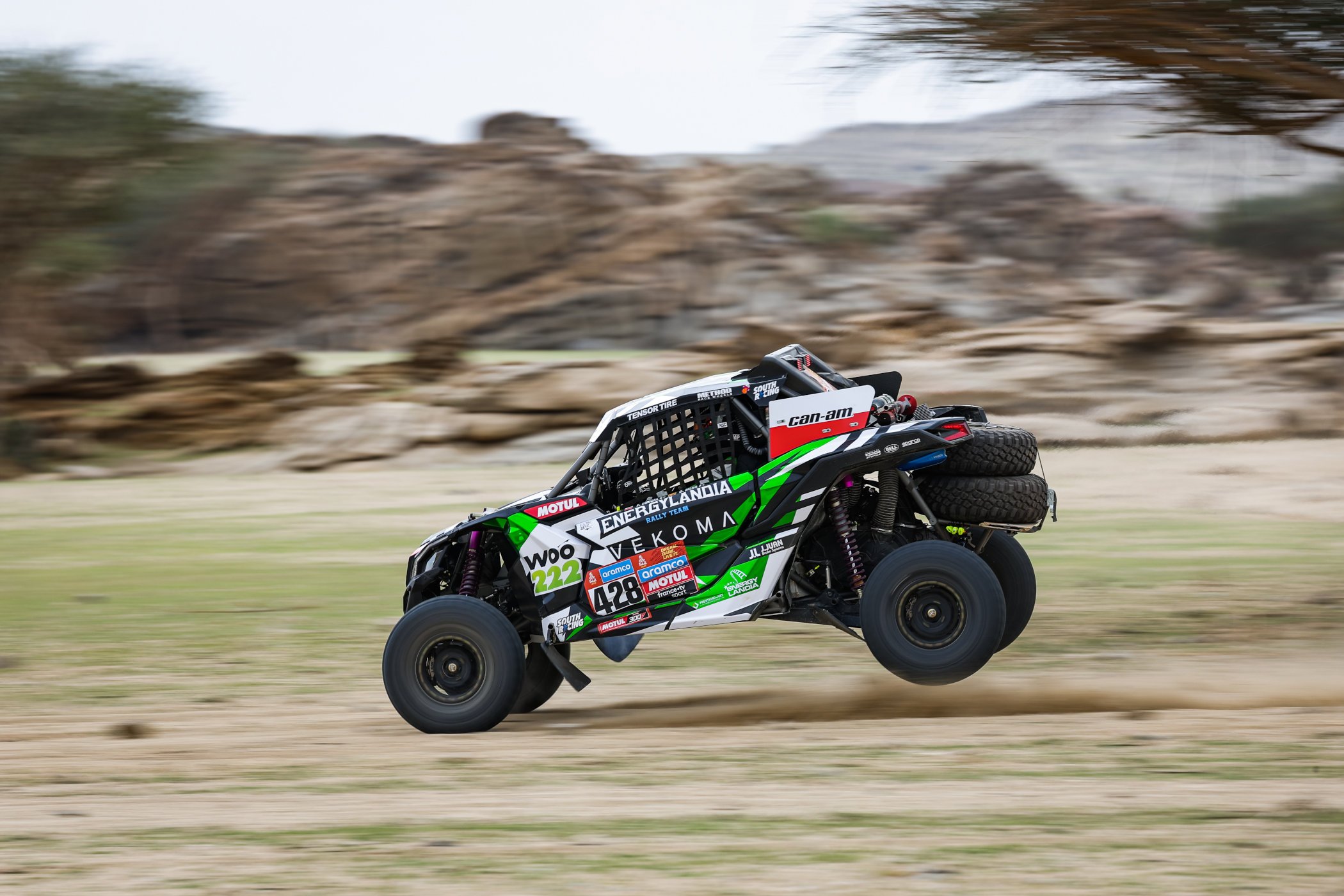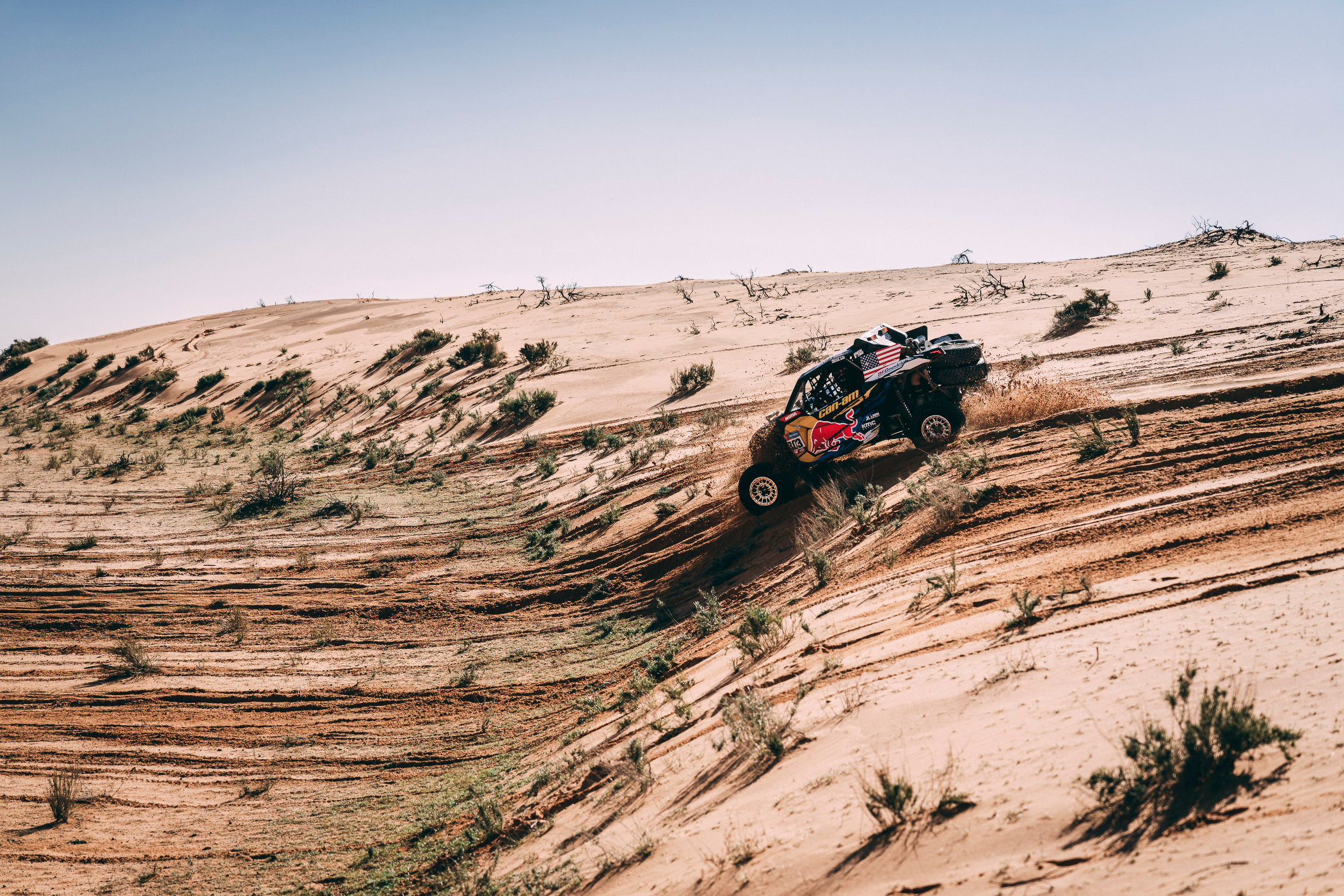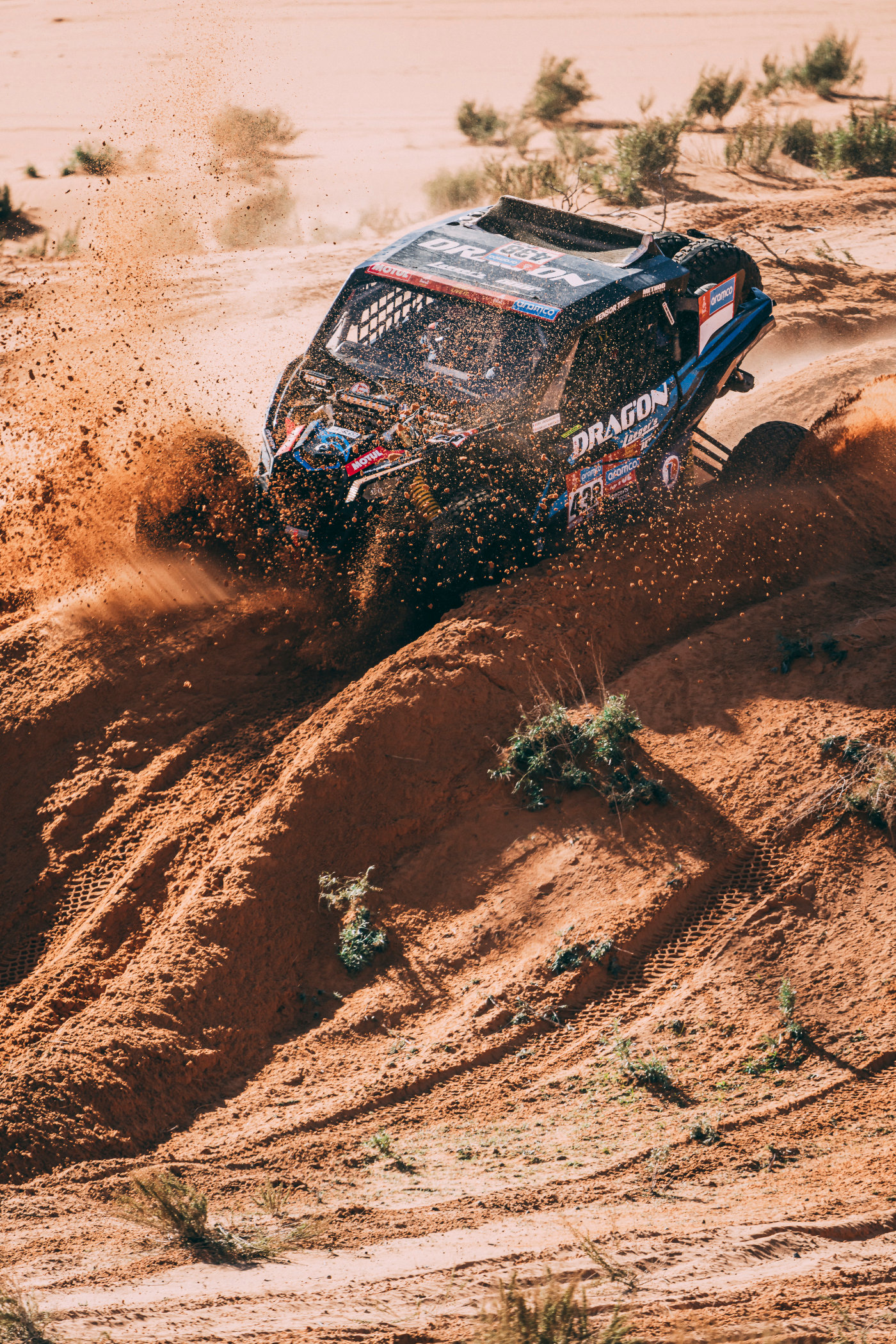A Recap Of The Monstrous Dakar 2023 Rally
Toyota wins again as Audi suffers heavily in this years gruelling Dakar campaign.
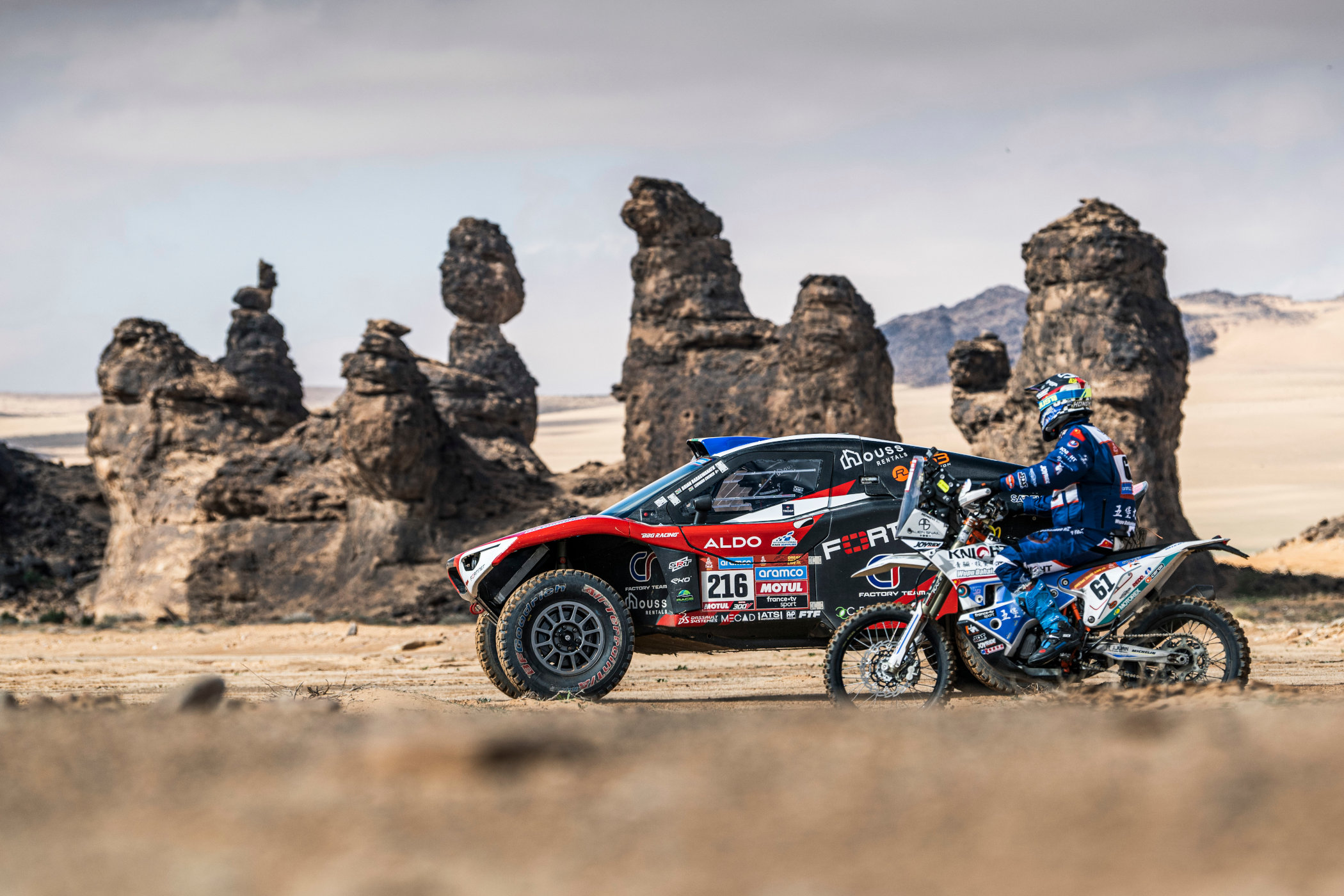
A couple of weeks ago we painted the scene for the annual desert showdown known as the Dakar Rally Raid for 2023. Audi was ready to take the fight to Toyota and Prodrive and lined up the almighty RS Q E-Tron E2 at the start of the Prologue on the 31st of December. Where the Audi is electrically driven, with a petrol engine basically doubling as a range extender, Toyota and others relied on conventional internal combustion engines to get them across Saudi Arabia. Now, with two weeks of ‘fun in the sun’ behind us, it’s time to take another look and see how the top competitors fared and summarise what happened in the cars, bikes, trucks and other categories. Here’s the recap of the Dakar 2023 edition!
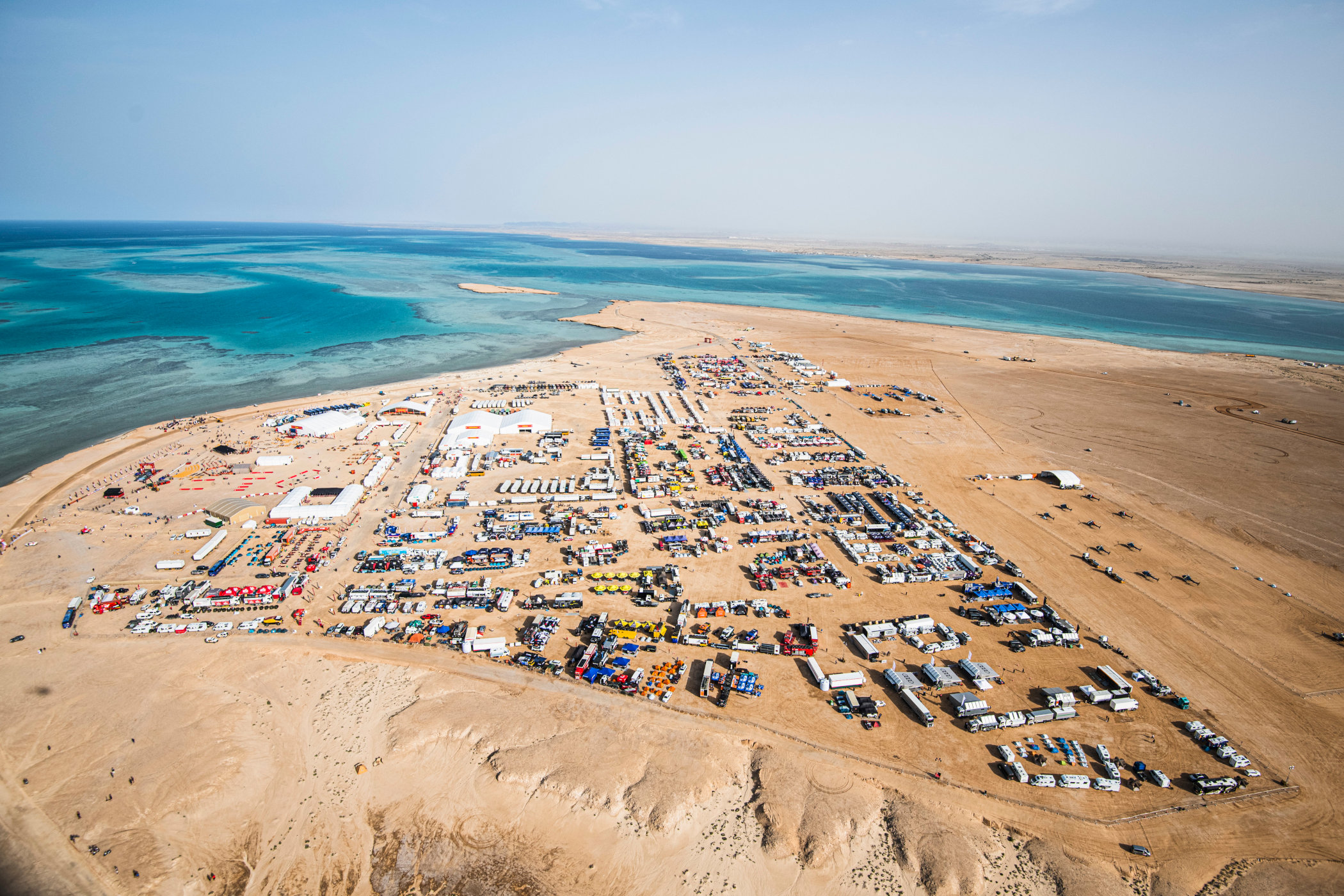
As always, most attention goes to the car category as that is basically the biggest playing field within the Dakar Rally Raid. Big-budget factory teams battle it out with professional privateer teams and courageous amateurs. And the term ‘amateurs’ does not mean they are messing about just to have a little fun. Oh no, these are serious competitors and a bit mad, to begin with, to willingly undergo the gruelling 5,000km+ adventure. Each competitor needs an FIA-sanctioned racing license and needs to prove the team is able to compete in and complete the Dakar (in theory).
Another stipulation states that competitors on a bike must have competed in other international rally raids before being allowed to start the Dakar. But we’re digressing a bit. As always, all classes are guaranteed to provide tons of action on the course, with crashes and breakdowns almost a certainty for all teams as they blast across the most amazing scenery for about a fortnight! This year, out of 370 teams that set off for the Prologue on the last day of 2022, more than half made it to the finish. That’s quite something considering that some years more than 75% fail to do so!
Toyota Wins, Audi takes a desert beating
This year saw the rivalry between Audi, Toyota and Prodrive peak, as each of these top-tier teams battled it out aiming for the win on every stage. Audi came prepared with three of its super-advanced RS Q E-Tron E2 prototypes. Toyota relied on the tried-and-tested Hilux racing truck, while Prodrive fielded the formidable Hunter T1+. Top drivers like rally ace Sebastian Loeb, multiple Dakar winner Nasr Al-Attiyah and the legendary Carlos Sainz Sr. battled it out stage after stage. Audi had an amazing start winning both the Prologue and the first stage, but after that, it was pretty much Prodrive and Toyota that came in first in the remaining stages. A big crash for Carlos Sainz Sr. in the Audi on stage 9 sidelined him as the car was too badly damaged to continue. The remaining two Audis also had their fair share of issues, leaving the door open for Prodrive and Toyota.
From stage three onwards though, it was Toyota’s Nasr Al-Attiyah who took over the lead in the overall standings and never conceded it, no matter what the others threw at him in terms of stage wins. He was closely followed by both his teammate Lucas Moraes and Sebastian Loeb in the Prodrive. No other constructor besides Toyota, Audi and Prodrive landed on the podium throughout the entire event, showcasing the dominance and resistance of the three. After all the dust had settled, Al-Attiyah took home his fifth overall win and his third for Toyota, while Sebastian Loeb came in second with a record-setting six-stage winning streak. Lucas Moraes completed the podium in his Toyota Hilux.
A Dutchman takes the win for iveco
The Dutch have a long and storied history when it comes to Dakar. The legendary Dutchman Jan De Rooy paved the way in his DAF and GINAF trucks for many others to follow; his son Gerard de Rooy also raced in DAFs, GINAFs and later Ivecos. For years it would be an extremely intense battle with the Russian Kamaz trucks but this year was different for reasons that need no explaining. The Truck category is always a recipe for spectacular images as these big, powerful machines plough through endless dunes and across barren wastelands at unimaginable speeds (despite being limited for top speed, as every class is).
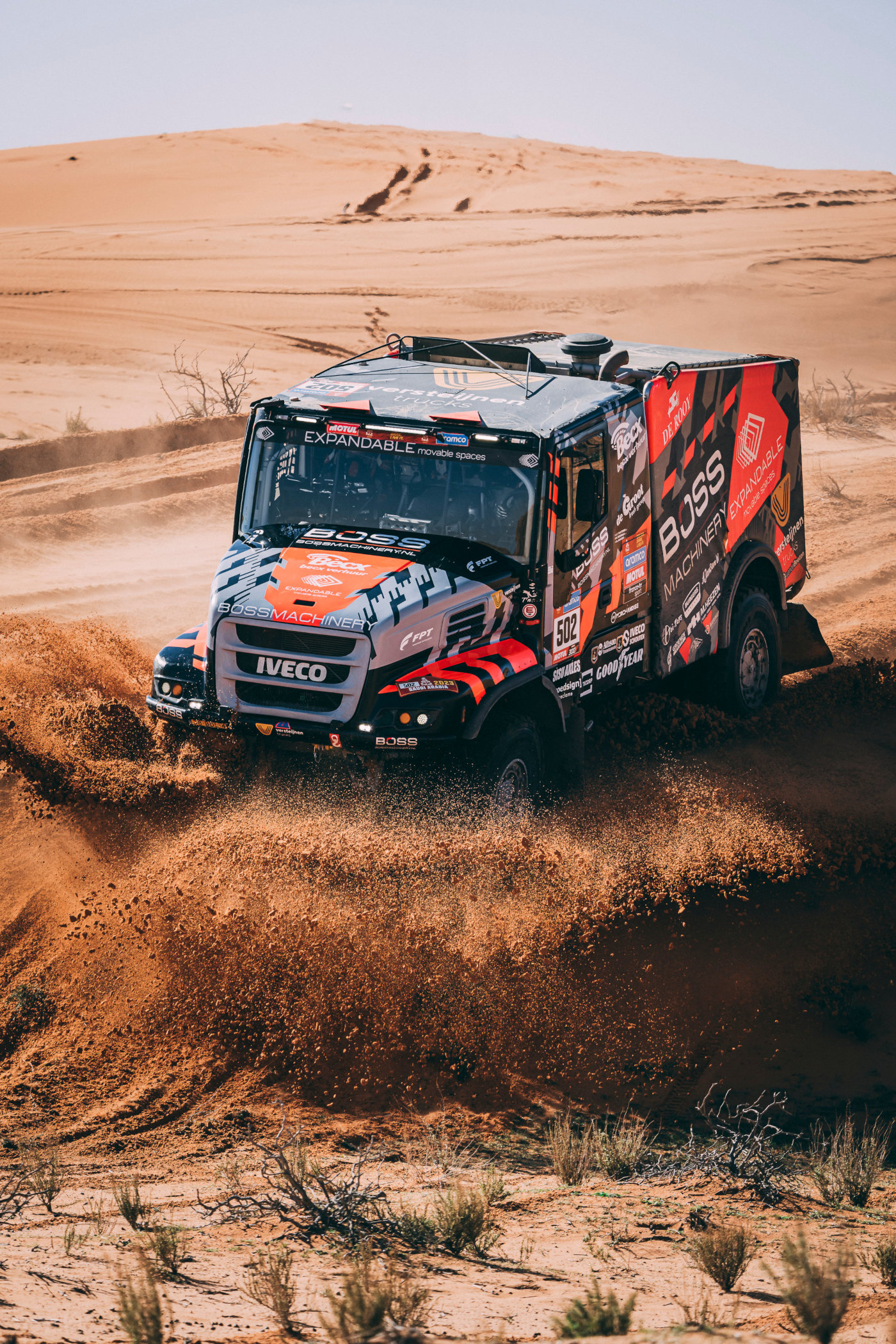
After two weeks of suffering and hardship, Dutchman Janus van Kasteren took the win in his Iveco Powerstar, closely followed by Czech driver Martin Macik and fellow Dutchman Martin van den Brink, both in similar Iveco trucks. The fourth-place finisher is also from the Netherlands, also drives an Iveco Powerstar, and happens to be Martin van den Brink’s son, 21-year-old Mitchel van den Brink. This might sound like a dominant performance by Iveco and the Dutch, but with any category, it’s all about consistency and trying to stay out of trouble as much as possible.
If you look at the stage-by-stage wins, it was a very close fight from start to finish! Martin Macik was the fastest six times, with Janus van Kasteren winning three stages, and father-and-son Van den Brink winning one each. Going through the overall podium finished per stage also indicates that these competitors battled it out every single time, along with Dakar legend Ales Loprais, and occasionally someone else thrown in the mix.
KTM back on top
Few records concerning Dakar are as impressive as KTM’s EIGHTEEN straight wins in the bikes. Considering the might of global manufacturers like Honda and Yamaha, this is an almighty record to achieve, and probably will never be beaten by anyone. The streak ended in 2020 when Honda came in first, but this year KTM was back on top, where they seemingly belong. But it wasn’t an easy victory whatsoever, as there was pretty much a new stage winner every day. Only three drivers won more than once during the two weeks of competition, all driving a different bike manufacturer (Husqvarna, KTM, Hero).
In the end, it was KTM’s Kevin Benavides who was victorious but by the narrowest of margins imaginable. The difference between him and teammate Toby Price was just 43 seconds! Just imagine that; navigating your way across thousands of miles over two weeks, on your own, and you win (or lose) by less than a minute! After almost 45 hours of racing it comes down to mere seconds. Third place was also close by, as Skyler Howes had to yield just over 5 minutes on his Husqvarna.
Quads, Prototypes, SSV’s and Classics
But that’s not all, as people also race on Quad bikes, light prototypes, side-by-side buggies (SSVs) and even classic cars. Frenchman Alexandre Giroud came in first in the Quad bikes. In the light prototype category, it was Austin Jones who piloted his Can-Am Maverick XRS to victory, while Polish driver Eryk Goczal won in the SSVs, also in a Can-Am Maverick XRS (the difference is that one is a prototype vehicle, while the other is a production vehicle. In the Classics category, fielding cars built before the year 2000, it was Juan Morera driving a Toyota HDJ80 that won.
Malle Moto
A special mention should be given to the Malle Moto class, where competitors on bikes and quads are completely unassisted. Where the rest of the categories can have mechanics work on their machines in between stages, a Malle Moto rider is given just one trunk of tools and spare parts. So basically, think of the hardest rally raid on the planet, and then think of doing it solo, with no outside help. Just you, and your (quad) bike. The idea is to come as close to the original adventuring spirit of the Dakar as possible. Well, you must be mad going at it on your own!
For more information, please visit Dakar.com.
Editorial Note: All images are provided by, and used with permission of the official Dakar organisation unless stated otherwise.


